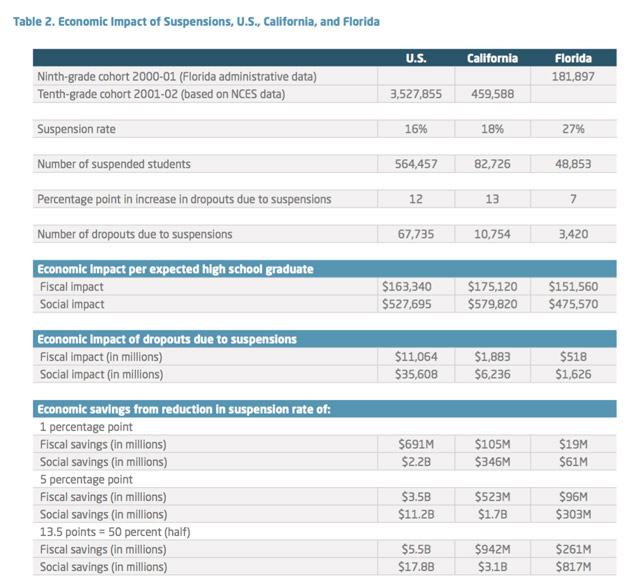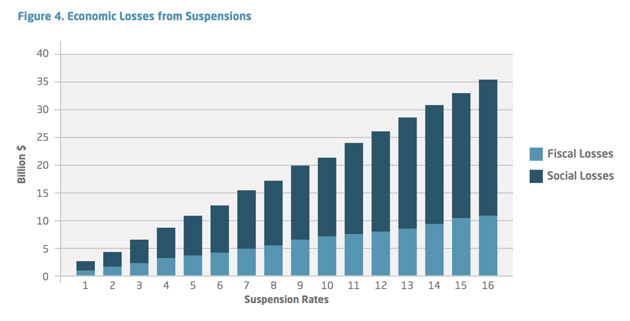
<a href="http://www.shutterstock.com/pic-200191565/stock-photo-portrait-of-a-young-high-school-student-bored-and-frustrated-with-his-head-down-on-his-desk.html?src=71DX9Mzb61NzYBkvPMHEJQ-1-0">antoniodiaz</a>/Shutterstock
Suspend a student early in his high school career, and taxpayers could pay the price for years to come.
According to a study released Thursday by the University of California-Los Angeles, the suspensions of 10th graders across the United States in the 2001-02 school year prompted an estimated 68,000 students to eventually drop out of school. Those dropouts, researchers say, cost Americans some $11 billion in lost tax revenue and $35.6 billion in broader social costs—such as health care costs, job loss, and potential earnings—over the course of a lifetime.

The study’s co-authors—UC-Santa Barbara professor emeritus Russell Rumberger and Daniel Losen, director of UCLA’s Center for Civil Rights Remedies—calculated those costs by first looking at how likely students were to drop out after receiving a suspension. They compared graduation rates of 10th graders who’d been suspended in their first semester with graduation rates of those who hadn’t been suspended; they then controlled for factors such as family income and parents’ educational attainment. Later, the researchers determined the financial impact of those departures based on a previous cost analysis by a Queens College professor named Clive Belfield.
Nationally, suspension rates have generally been on the upswing since the 1970s, particularly for children of color. Since 2013, the report notes, many large districts have reduced the number of suspensions handed out. Black students, who made up 16 percent of the overall public school population in the 2011-12 school year, received at least 32 percent of suspensions that year. Overall, 3.5 million students were suspended by US public schools in the 2011-12 school year.

Researchers argue that by reducing the national suspension rate by just 1 percent—perhaps via alternatives to traditional discipline—we could save up to $2.23 billion in social costs. Losen described the figures as “conservative,” noting the costs associated with suspensions could be far steeper—at least $100 billion—if multiple graduating classes were taken into account. “We’re feeling the costs of kids,” he says, “who were suspended 20 years ago.”















